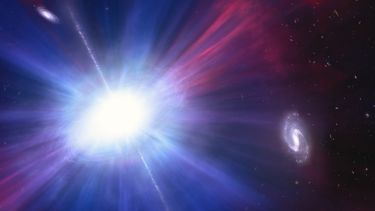- Scientists have observed a series of bright, brief flashes occurring months after a stellar explosion, known as a luminous fast blue optical transient, or LFBOT
- The sighting of the never before seen flashes were made possible thanks to the University of Sheffield’s ULTRASPEC camera, mounted on the Thai National Telescope
- Since their discovery in 2018, astronomers have speculated about what might drive such extreme explosions
Astrophysicists have settled the debate over the nature of a rare type of stellar explosion, thanks to a camera designed and built at the University of Sheffield.
Scientists have observed a series of bright, brief flashes occurring months after a stellar explosion, known as a luminous fast blue optical transient, or LFBOT.
One of the most crucial datasets for the research, published in Nature, was obtained with the University of Sheffield’s high-speed optical camera ULTRASPEC, mounted on the 2.4m Thai National Telescope. This showed that the repeated flares were as bright as the original explosion and yet each lasted only tens of seconds.
Since their discovery in 2018, astronomers have speculated about what might drive such extreme explosions, which are far brighter than the violent ends massive stars typically experience as supernovae. The research team believes the previously unknown flare activity they observed, and in particular their short timescale, confirms the engine of the LFBOT must be a stellar corpse - a black hole or neutron star.
Professor Vik Dhilon from the University of Sheffield’s Department of Physics and Astronomy who leads the ULTRACAM project, said: "Our high-speed camera ULTRASPEC was instrumental in the discovery of this incredible new type of stellar explosion, showing that the object emitted multiple supernova-strength optical flares that repeated on timescales of less than a minute, and all of this happened months after the initial explosion.
“This is unprecedented behaviour - most supernovae explode once and then steadily decline in brightness over the course of a few weeks until they disappear from view.
“The short timescale flares we observed imply that the engine driving the explosion is a small object - most likely a rapidly-spinning neutron star or an accreting black hole. This discovery teaches us more about the varied ways in which stars end their lives and the exotica that inhabit our Universe."
Anna Y. Q. Ho, Assistant Professor of Astronomy in the College of Arts and Sciences at Cornell University, said: “This settles years of debate about what powers this type of explosion, and reveals an unusually direct method of studying the activity of stellar corpses.
“We had never seen anything like that before – something so fast, and the brightness as strong as the original explosion months later – in any supernova or LFBOT. We’d never seen that in astronomy.
“Amazingly, instead of fading steadily as one would expect, the source briefly brightened again – and again, and again, LFBOTs are already a kind of weird, exotic event, so this was even weirder.”
To view the full paper, please visit: https://www.nature.com/articles/s41586-023-06673-6
Contact
For further information please contact:



